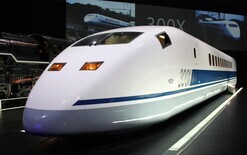Mitsubishi kept false tests
Mitsubishi continued to improperly test the fuel economy of its vehicles after it admitted to falsifying fuel figures earlier this year, says Japan’s transport ministry. The Japanese carmaker admitted to manipulating test data on four minicar models, two of which were manufactured for Nissan. In August, eight more models were pulled from the market when the transport ministry found that Mitsubishi had misrepresented the fuel-economy figures. The Wall Street Journal reports the transport ministry opened an investigation after the latest falsified fuel figures, and found that Mitsubishi had again failed to properly measure fuel economy for the models. Naoki Fujii, head of the road transport bureau at the ministry, says: “We cannot help but feel concerned that these points haven’t been improved.” The ministry instructed Mitsubishi in April on how to properly perform fuel-economy tests, but despite these instructions, workers at the company continued to manipulate the results of tests conducted in May. Japanese carmakers are supposed to perform five road tests and take the average of the median values. Road test results are affected by environmental conditions, such as wind, and conducting more tests can result in “abnormally better” results from which to calculate the car’s fuel-economy, say the transport ministry. In one case, Mitsubishi testers performed the test five times, but only took the average of the best fuel economy numbers, instead of the median values. In another, testers weren’t told by the company they could only perform five tests. Mitsubishi chief executive Osamu Masuko says the company takes the continued problems seriously, and blamed a “lack of capability” at the company division responsible for carrying out the tests. The news comes as Nissan slows down its planned acquisition of a controlling stake in Mitsubishi. The almost $3 billion deal was set to be completed by the end of October, and is now scheduled to be completed by the end of the year.





